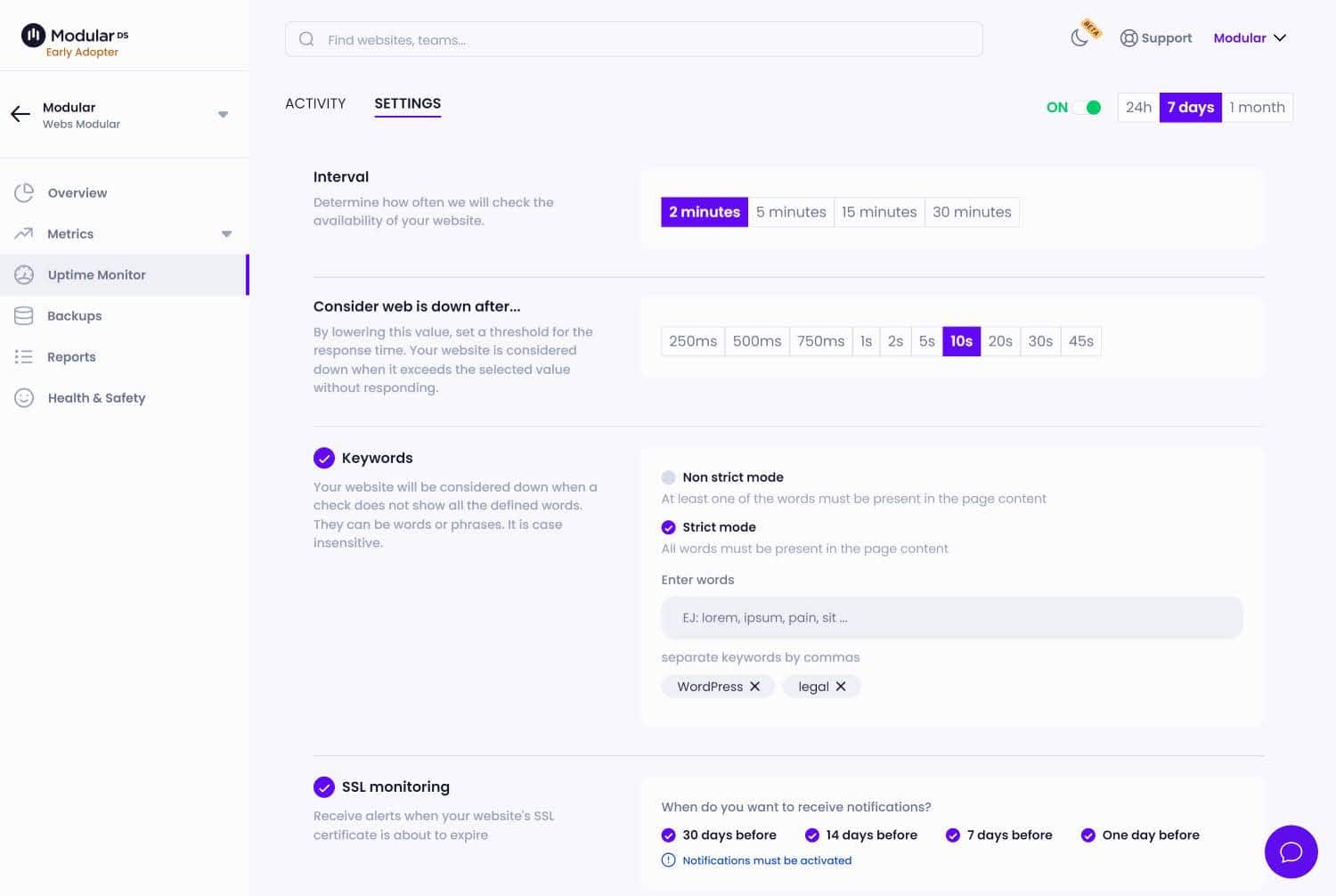Did you receive an alert that your website was down, but everything seems to be working fine? Don't worry. Sometimes, downtime alerts you receive via email or SMS from Uptime Monitor may not reflect a real problem with your site. Here, we explain the most common reasons behind these "false" alerts and how you can adjust your settings to avoid them.
Response time
Uptime Monitor allows you to define a response time threshold before considering your site as "down." If you set this time below your site's usual loading time, you will receive downtime alerts. For example, if your site takes 2 seconds to load, but you've set the threshold at 1 second, the system will alert you unnecessarily.

Solution: Review and adjust the response time in your website's Uptime Monitor settings. The default value is set to 5 seconds to accommodate most loading times, but you can customize it according to your site's needs.
The effect of redirects
A redirect configured on the homepage can cause the Uptime Monitor to incorrectly interpret that your site is down, even when the redirect is intentional and your site is functioning correctly.
Upcoming improvements:
We are developing an update for the Uptime Monitor that will allow you to specify if a redirect is intentional, thus avoiding downtime alerts in these cases. In the meantime, keep in mind that redirects can cause these alerts.
Remember, these alerts are designed to keep you informed about the status of your site, but some adjustments may be necessary to improve their accuracy.
